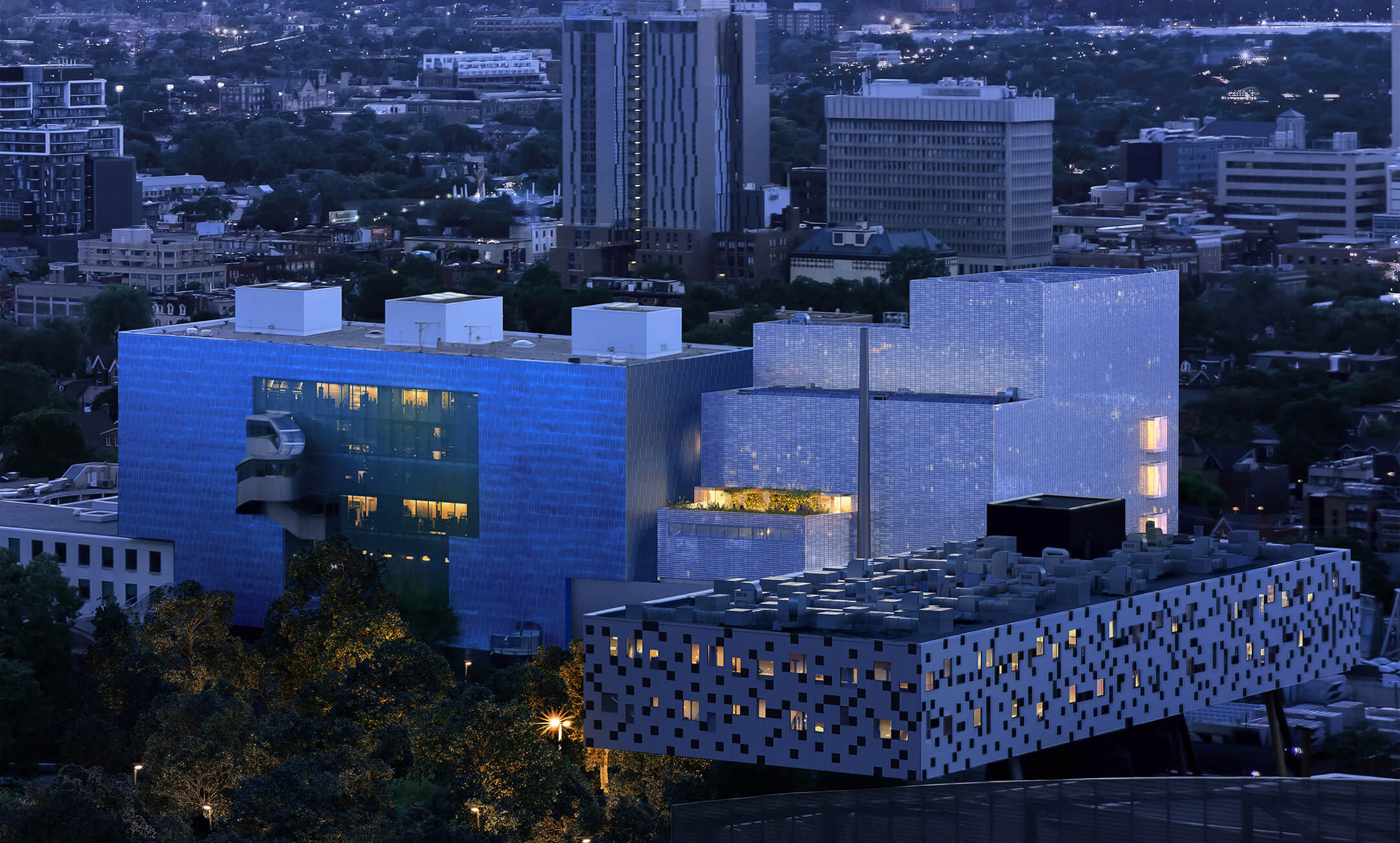Novae Res Urbis: AGO gallery expansion looks to achieve new heights in sustainability

For more information, please contact:
Andrea Chin, Communications Director
Email: achin@dsai.ca
Don Schmitt, Principal
Email: dschmitt@dsai.ca
Michael Leckman, Principal
Email: mleckman@dsai.ca
The Dani Reiss Modern and Contemporary Gallery is featured in an article by Lana Hall in Novae Res Urbis.
As the Art Gallery of Ontario (AGO) looks to design its new Dani Reiss Modern and Contemporary Gallery expansion, the project team must tackle a unique challenge: determining how to develop a sustainable building that also complies with the gallery's light, temperature and humidity requirements for optimally displaying its exhibitions.
Last spring the AGO announced it had selected a team comprising Diamond Schmitt, New-York-based Selldorf Architects and Two Row Architect to design the 40,000 square foot addition to the gallery, a five-storey expansion that will be built atop the existing building's loading dock on the eastern portion of the site, overlooking Grange Park. The expansion will increase the art gallery's display space by 30 per cent, focusing primarily on showcasing global contemporary work, including Indigenous art and art from the African and Asian diasporas. The gallery is being named in honour of Dani Reiss, an AGO donor and the chief executive officer (CEO) of Canada Goose.
But maximizing display space is not the only thing the AGO is prioritizing with the expansion-it wants the new wing to be designed as sustainably as possible. The project team has designed the expansion to meet net-zero carbon operating standards and is seeking Canada Green Building Council (CAGBC) zero carbon design certification.
Last week the federal government announced an investment of $25 million for the art gallery expansion through its Green and Inclusive Community Buildings (GICB) program, a grant program that aims to support community facilities as they undertake green and accessible retrofits. In total, the federal government has earmarked $1.5 billion over five years for the GICB program.
But an art gallery can make a challenging candidate for compliance with contemporary green building standards, mostly because of the intensive lighting and temperature regulation required to both display and preserve exhibitions. To help guide the design, the project team also adopted the Bizot Green Protocol, an international standard for sustainability and ecology in museum practice.
"Museums, galleries, because they're protecting art 24 hours a day, the systems are operating at a very high level, 24 hours a day,' says Diamond Schmitt principal Michael Leckman. "By adopting the Bizot Green Protocol, you expand the range of humidity change over a 24-hour period [and] you expand the range of temperature change over a 24-hour period without harming the art, [recognizing] over time that this expanded range is acceptable … which means [museums are] now able to contribute to decarbonization and continue to share their collections.'
The project team designed the expansion to have a compact form with high levels of insulation on the walls and roofs, which in turn reduces the need for artificial heating and cooling.
"When you make a simple form and insulate it properly, the air system is working less hard, and the variation of temperature over a certain time is smaller because it's a super insulated building.' Leckman told NRU.
Read the full article here.
Posted with permission of the publisher of NRU Publishing Inc. Original article first appeared in Novae Res Urbis Toronto, Vol. 27, No. 47, Friday, December 1, 2023.